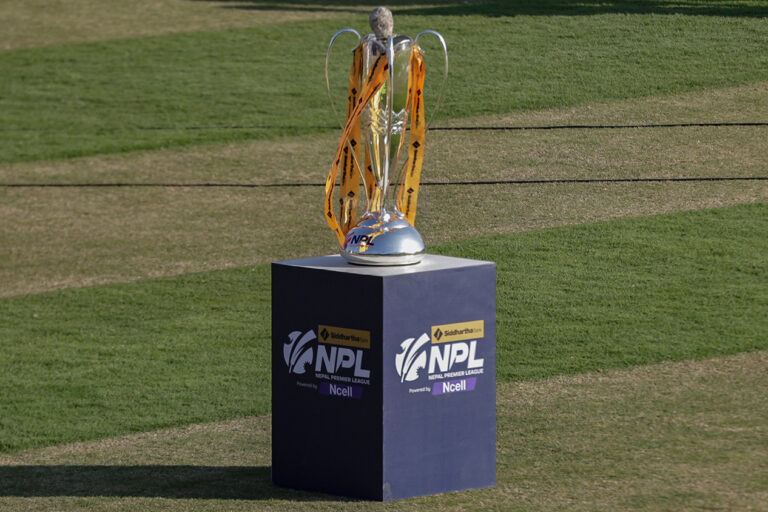
Rs 492.5 million parapet and Rs 473.7 million floodlights undermined by inadequate sanitation, causing widespread discomfort
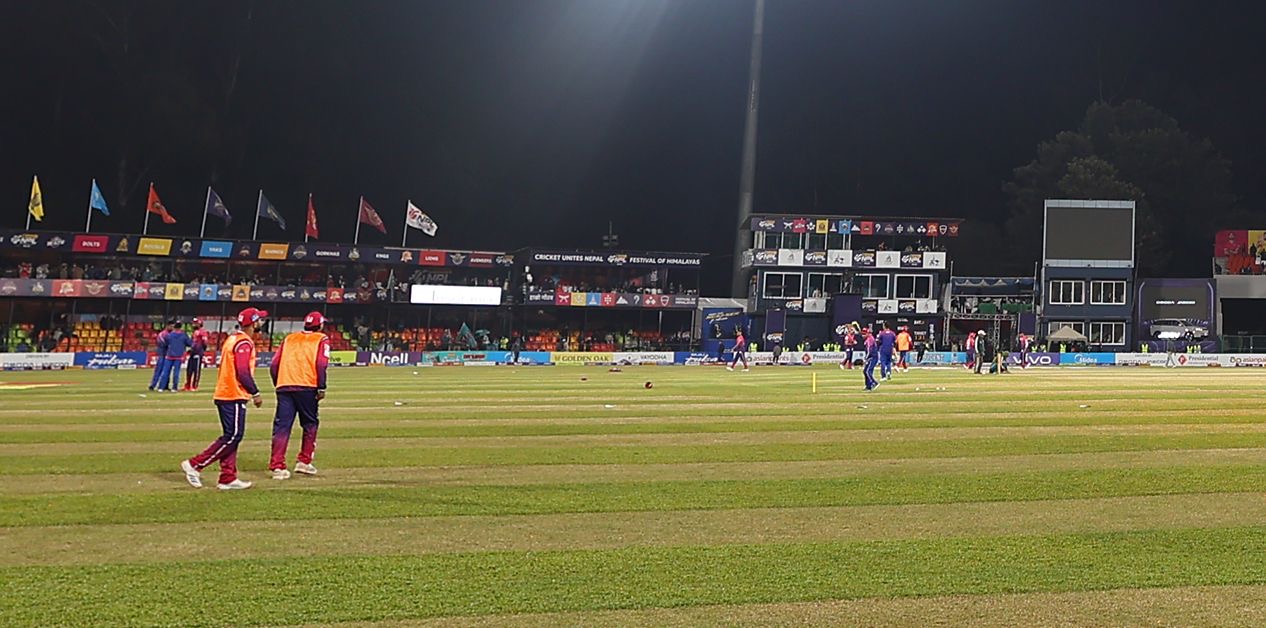
KATHMANDU: The Tribhuvan University (TU) International Cricket Ground in Kirtipur presents a vibrant spectacle this season. The NPL (Nepal Premier League) Season 2, which inaugurated on Monday beneath the illumination of floodlights, is presently captivating widespread attention. The thronged seating in the parapet, the resounding musical atmosphere, and the audience’s profound enthusiasm for the night fixtures are beyond description.
However, the luminous glow observed within the stadium is not being uniformly replicated across all facets of the event. This disparity has caused considerable dismay among cricket enthusiasts. While the public fervor for franchise cricket in Nepal is soaring, the persistence of outmoded managerial efficiency significantly amplifies the peril of the state’s substantial investment being ultimately squandered.
When the match between the defending champion Janakpur Bolts and Kathmandu Gorgaz took place on Monday, the digital scoreboard’s continuous flickering marred the game. That problem persists even now. Amidst a budget of millions, digital advertising, and grand claims, supporters are disappointed that basic technology like the scoreboard cannot remain stable.
“The ground has been rendered so aesthetically pleasing. Yet, the persistent issue with the scoreboard makes it seem akin to an ‘event testing’ phase,” remarked Sandeep Singh, a spectator who traveled from Bagh Bhairav, Kirtipur, to attend the match.
Where is the technological deployment?
In contemporary cricket, the digital scoreboard transcends the function of a simple display for scores; it is widely regarded as the veritable heartbeat of the fixture. Spectators glean crucial intelligence regarding the match’s tempo, run rate, tactical pressure, and strategic shifts primarily through this apparatus. However, this fundamental technological element has lapsed since the inception of the NPL, thereby obscuring the game’s intrinsic excitement and complete dramatic arc.
The inconsistent operation of the scoreboard has not only confused spectators but has also diminished the premium experience promised by franchise cricket. Consequently, it has dampened the excitement created by the floodlights and the enjoyable atmosphere inside the ground. Singh says, “The operation of a digital scoreboard is considered normal in modern cricket. But in the NPL, that very aspect has become a major issue. Therefore, we have to settle for watching the score online.”
CAN (Cricket Association of Nepal) has adopted a clever method to display advertisements all around the ground. Large hoardings promote various brands, starting right from the TU gate. However, CAN appears hesitant to display the game’s scorecard.
The NPL’s promotion was intensely carried out from the previous month. However, the use of modern technology, as advertised, has not been evident since the opening day. CAN had guaranteed the use of technology, including a speed gun, equipment for measuring the distance of sixes, digital boundaries, and buggy cameras. Spectators were also confident that this would provide an international-level franchise cricket experience. However, there is no trace of any of those technologies on the ground.
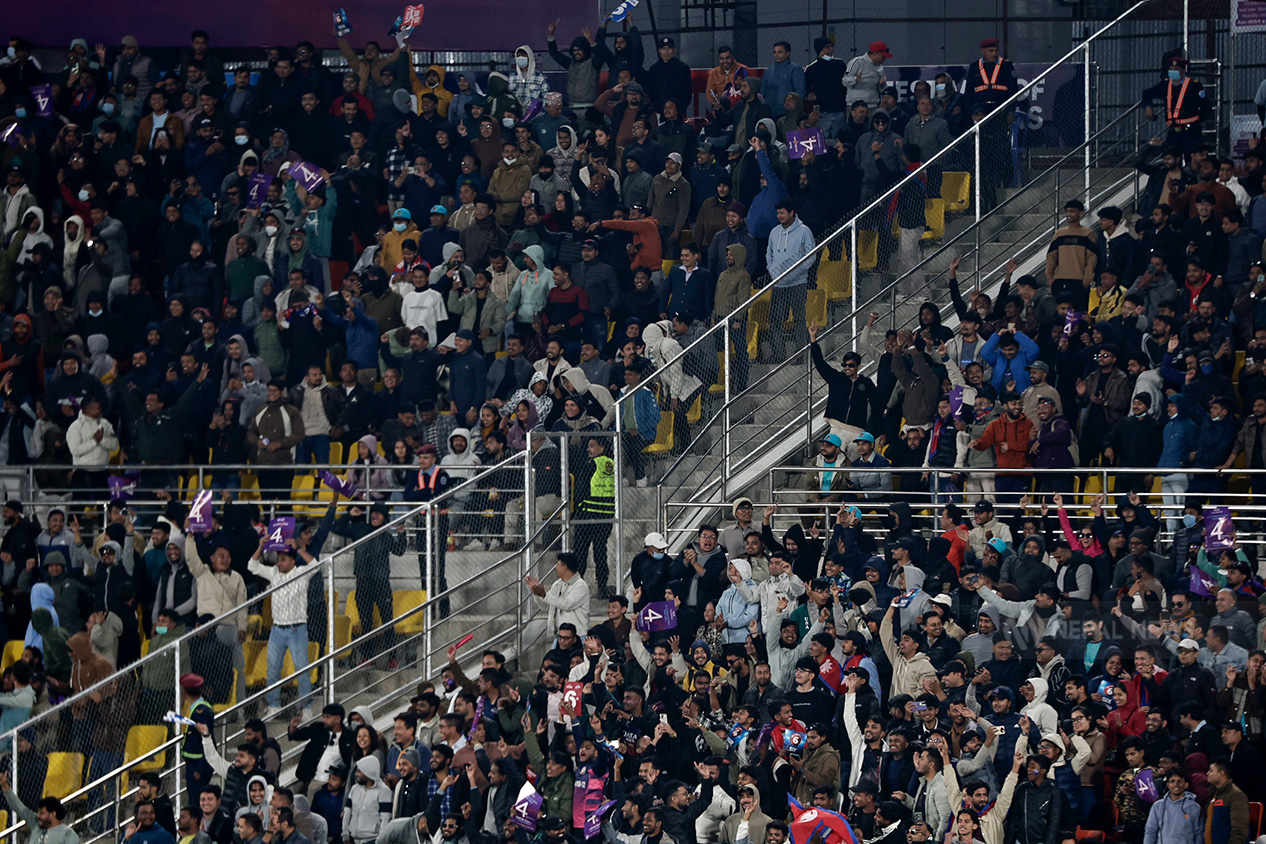
In franchise cricket, technology is not merely a matter of decoration. It is also the basis for conveying the reality of the game to the spectators, explaining the strategies, and bringing the importance of every moment to life. The speed gun shows the speed of the ball, the digital boundary reveals the technical aspects of the player, and the buggy camera and six-measurement system convey the game’s excitement to the audience. All of these elevate the game experience to an international level. However, cricket enthusiasts are disappointed that all these announcements remained confined to promotions.
“When I watched the NPL for the first time, I had great enthusiasm. But due to the lack of technology and information, I could not truly enjoy it,” says another spectator, Ayusha Pandey. She adds, “When the floodlights were on, it felt like seeing heaven alive. But the lack of details like the distance of sixes, the speed of the ball, and player performance made it dull.”
Continuation of Audience Hardship
The security arrangement outside the ground is tight. CAN itself has deployed private security personnel in the first perimeter. Armed police, including regular police, are deployed in the second perimeter. However, there is no discipline in crowd management. Shoving at the entrance, disorganized queues at the ticket counter, and traffic jams outside strain the spectator experience. Even those who bought online tickets are forced to queue one hour before the game begins because physical scanning is required. On the opening day, spectators had already arrived at the ground by 1 PM to watch the game, which started at 4 PM.
Reaching Kirtipur on a night-game day requires courage. The narrow university road and simultaneous academic activities continuously cause problems with transit.
CAN has demarcated seven zones to control the crowd. Zone ‘P’ is provided pitch access. Following that, access is given to the players, match officials, broadcasting team, sponsors, CAN management, premium sponsors, and Zone 5 grants access to the media and players’ families. Only Zone ‘6’ is allocated for spectators to enter. At least 10,000 spectators access the general parapet from this zone. Consequently, extreme crowding is observed.
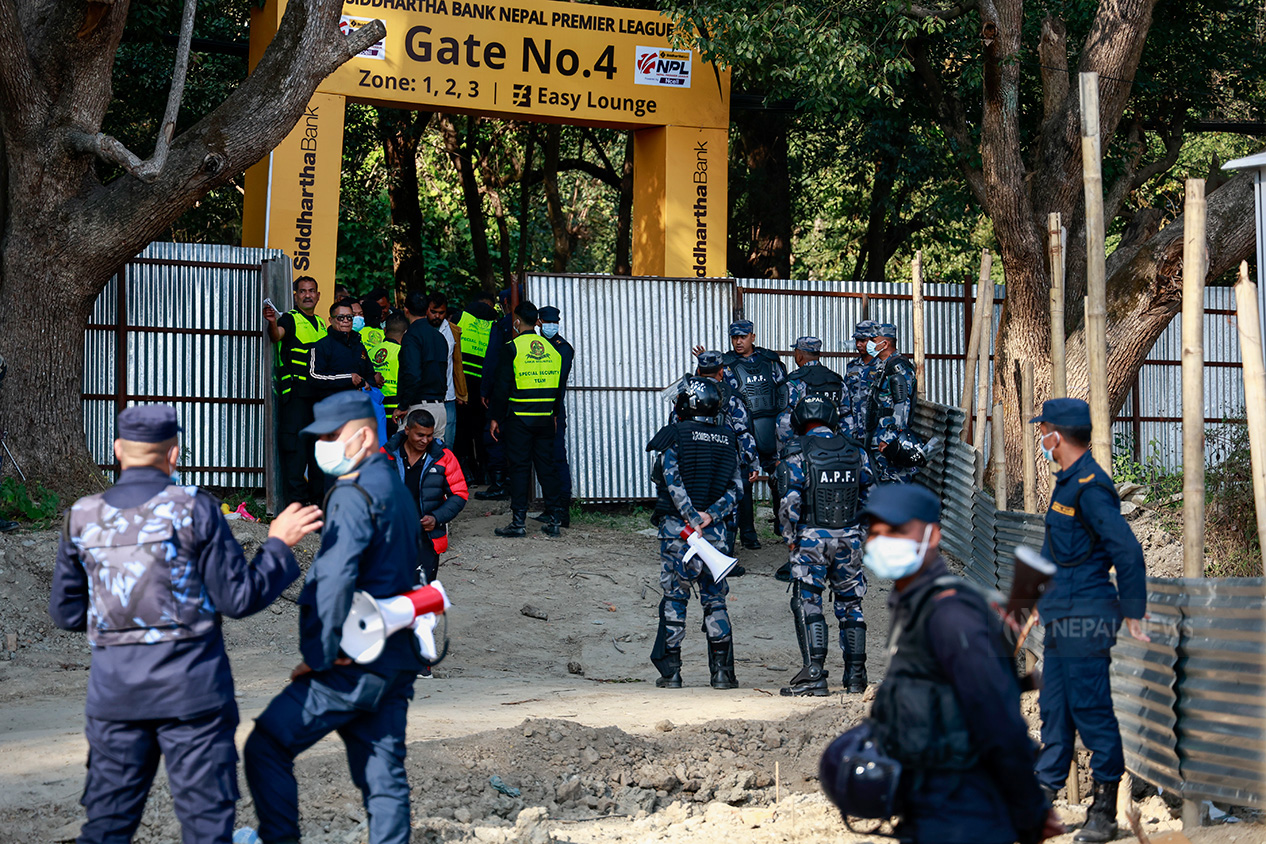
“I arrived half an hour early. But because of the long queue, the game had already started by the time I entered,” says Binamra Adhikari, a Chitwan Rhinos supporter. Furthermore, spectators who purchased seasonal passes are suffering greatly. Spectators who paid Rs 15,000 for a one-month package and arrived at the ‘South VIP Zone’ to watch the game are having a bad experience with the scoreboard. With a large scoreboard right in front of this zone, the view of the ground is obstructed.
The government spent Rs 492.5 million to construct the parapet and Rs 473.7 million for the installation of floodlights. Yet, despite such a high expenditure on the ground, everyone is suffering due to the lack of a toilet facility with a capacity to accommodate 10 people.
The CAN itself says that one gate alone can accommodate approximately 3,000 spectators. However, the crowd becomes unbearable when people go to the toilet during the ‘innings break.’ Consequently, some end up using the toilet designated for women, while others are seen urinating outside. Journalist Manoj Shrestha recounts a similar experience.
He wrote on his social media, “The boys streamed outside. The police chased them away. If there were toilets with greater capacity, they would not go outside. Where is the alternative? That same group went to the food stall; there was only one shop there. When they could not buy food, they looted everything and ran away. How are the vendors supposed to make a living now?”
Immediately after every match result, a post-match conference takes place. This is an international practice. However, Karan KC, the captain who attended the post-match conference after Kathmandu secured a five-wicket victory in the opening match on Monday, was embarrassed in front of about 50 journalists. Until the previous day, he had been praising the ground. But while speaking at the post-match conference, the lights suddenly went out. Having played under the bright lights of the stadium, he ended with a sarcastic remark: “Should we install floodlights here too, perhaps?”
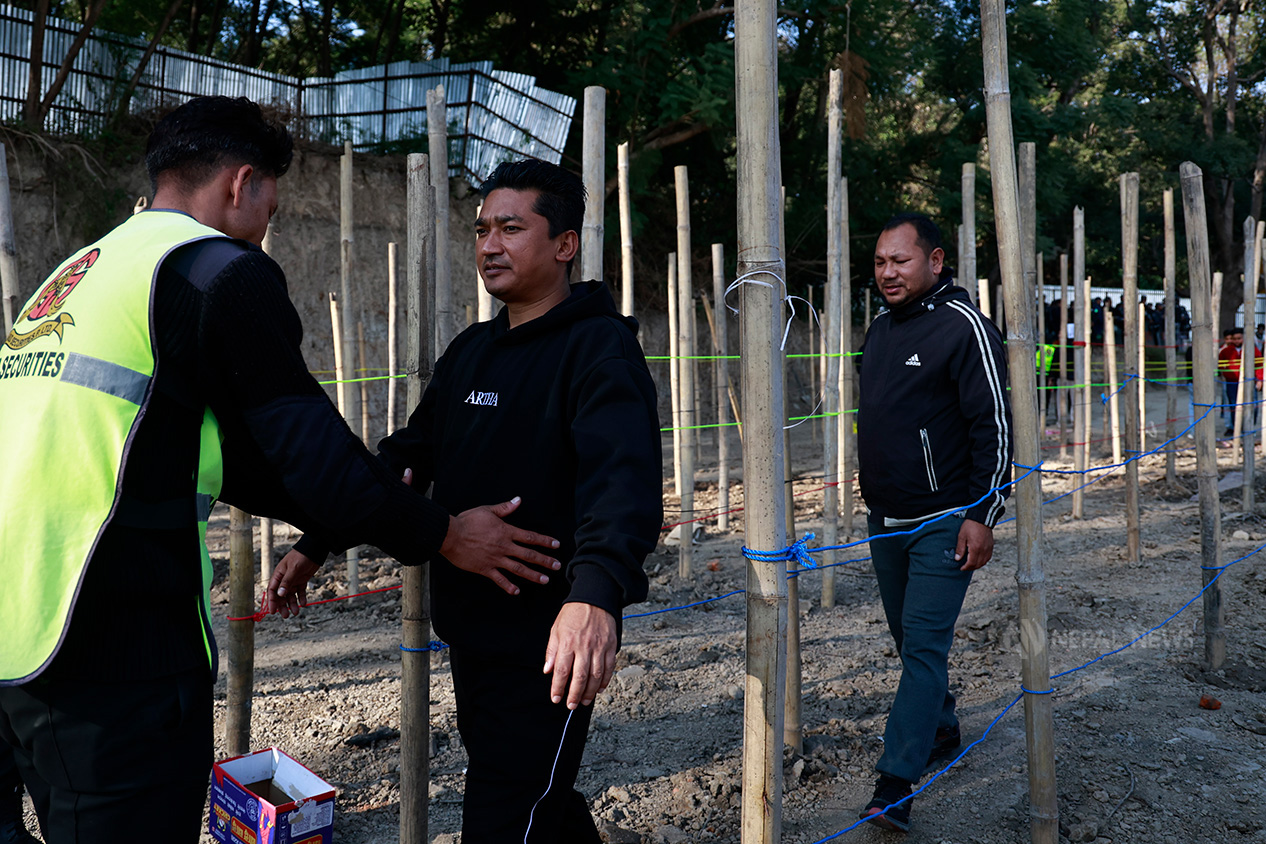
KC was not the sole individual to perceive the sudden lack of illumination. Journalists covering the same fixture on the inaugural day also experienced this operational deficit. These media professionals, who frequently execute their duties devoid of essential facilities such as adequate lighting and stable internet access, received Karan’s remark as merely the prevailing norm.
However, this reality, which has been conspicuously observed during NPL Season 2, is categorically abnormal. For CAN, the NPL is not merely a sporting tournament; it represents a crucial opportunity to reconstitute public confidence.
